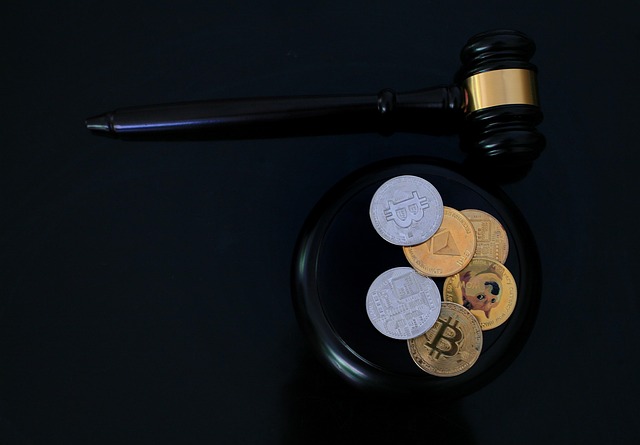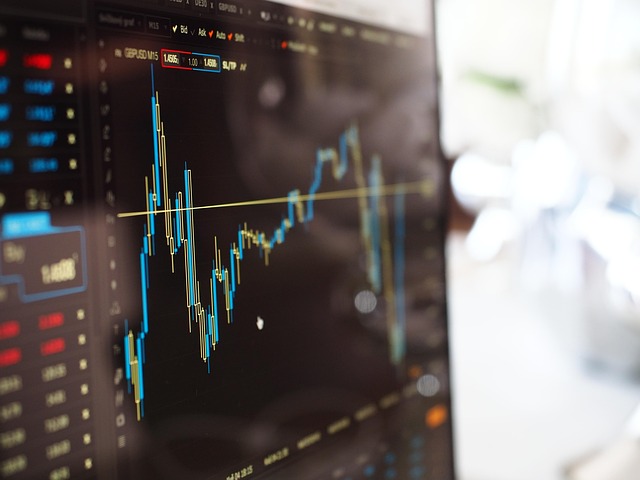Are Trading Bots Legal? An In-Depth Analysis
Author: Jameson Richman Expert
Published On: 2025-08-17
Prepared by Jameson Richman and our team of experts with over a decade of experience in cryptocurrency and digital asset analysis. Learn more about us.
The question of whether trading bots are legal has become increasingly relevant amid the rapid expansion of digital financial markets and the widespread adoption of automation in trading strategies. Trading bots—also known as algorithmic trading systems, automated trading software, or trading algorithms—are sophisticated tools designed to execute buy and sell orders automatically based on predefined criteria, real-time market data, and complex computational models. As their usage proliferates across retail and institutional trading environments, understanding the legal landscape is crucial for ensuring compliance, managing risk, and maintaining ethical standards. This comprehensive analysis explores the nuances of trading bot legality, regulatory frameworks worldwide, potential legal and ethical pitfalls, and best practices for responsible deployment within legal boundaries.

Understanding Trading Bots and Their Functionality
Trading bots operate using advanced algorithms that analyze vast datasets, identify trading opportunities, and execute orders with minimal human intervention. They leverage a range of technical indicators—including Moving Averages, Relative Strength Index (RSI), Moving Average Convergence Divergence (MACD)—market patterns, statistical models, and machine learning techniques to inform their decisions. These systems can monitor multiple assets across various exchanges simultaneously, executing trades within microseconds—significantly faster than any human trader can act. Their core functionalities include:
- Arbitrage: Exploiting price discrepancies for the same asset across different exchanges or markets to secure riskless profits. This requires rapid data analysis and order execution.
- Market Making: Providing liquidity by placing both buy and sell orders to profit from the bid-ask spread while contributing to market stability.
- Trend Following: Capitalizing on sustained price movements by detecting and riding established trends, often using moving averages or momentum indicators.
- Mean Reversion: Trading on the assumption that prices will revert to their historical averages, enabling profit from deviations outside of typical ranges.
The primary advantage of trading bots lies in their speed, efficiency, and ability to operate 24/7 without fatigue. They can process enormous datasets, adapt swiftly to changing market conditions, and implement complex strategies systematically. Additionally, they help mitigate emotional biases—such as fear, greed, or panic—that often impair human traders' decision-making. When used responsibly, trading bots can enhance profitability, improve market liquidity, and provide a competitive edge in high-frequency trading environments.
The Regulatory Landscape of Trading Bots
The legality of deploying trading bots is deeply intertwined with the regulatory environment of each jurisdiction. Financial authorities aim to preserve market fairness, transparency, and systemic stability by regulating automated trading activities. Regulations typically focus on preventing market manipulation, ensuring equitable access, and maintaining integrity within financial markets.
In the United States, regulatory oversight is primarily conducted by the Securities and Exchange Commission (SEC) for securities markets and the Commodity Futures Trading Commission (CFTC) for derivatives and commodities. These agencies enforce laws against manipulative practices such as quote stuffing, layering, spoofing, and insider trading. While the use of trading bots per se is not illegal, employing them to manipulate markets—such as artificially inflating volume or misleading other traders—is prohibited. For example, spoofing (placing orders with the intent to cancel to manipulate prices) is explicitly illegal under the CFTC and SEC regulations. Regulations like the SEC’s Regulation Systems Compliance and Integrity (Reg SCI) and Rule 15c3-5 impose real-time risk controls, cybersecurity standards, and monitoring requirements on high-frequency and algorithmic trading firms.
In Europe, frameworks such as MiFID II (Markets in Financial Instruments Directive II) and directives from ESMA (European Securities and Markets Authority) impose stringent rules on algorithmic trading. These include pre-trade risk controls, testing requirements, and post-trade transparency obligations. Firms deploying trading algorithms must register with regulators, demonstrate robust testing procedures, and implement risk management controls to prevent market disruption or manipulation.
Other jurisdictions—such as Japan, Australia, Canada, and emerging markets—have diverse approaches. Some enforce licensing and registration for algorithmic trading operators; others are more permissive, creating ambiguous legal environments for individual traders using bots. In certain regions, deploying bots without proper authorization could be deemed illegal or result in sanctions if tied to manipulative or deceptive activities. Overall, understanding local laws and regulations is imperative for compliance.
Failure to adhere to jurisdiction-specific rules can lead to fines, trading bans, civil lawsuits, or even criminal charges. Consequently, legal due diligence and ongoing regulatory engagement are vital for traders and firms utilizing trading automation tools.
Are Trading Bots Allowed on Major Cryptocurrency Exchanges?
Most reputable cryptocurrency exchanges offer API interfaces that enable traders to develop and deploy trading bots, provided users abide by platform policies. Leading exchanges such as Binance, MEXC, Bitget, Bybit, and Coinbase Pro provide APIs supporting real-time market data streaming, order execution, account management, and risk controls. These APIs facilitate automation, allowing traders to implement complex strategies programmatically and efficiently.
However, each platform enforces specific rules regarding automated trading activities. Violating these policies—such as executing manipulative tactics (spoofing, quote stuffing), exploiting vulnerabilities, or exceeding API rate limits—can result in account suspension, funds being frozen, or legal action. For example, Binance’s Terms of Service explicitly prohibit manipulative practices, and their API guidelines include restrictions to prevent abuse. Many exchanges also employ security measures like IP whitelisting, rate limiting, and anomaly detection to prevent malicious activity.
Traders should thoroughly review each platform's terms, API documentation, and community guidelines to ensure compliance. Best practices include using official APIs, maintaining transparency about automation activities, and avoiding manipulative tactics. Staying informed about policy updates and maintaining open communication with exchange support teams can help prevent unforeseen issues.
Register on Binance to access compliant automation options and ensure adherence to platform rules.

Legal Risks and Ethical Considerations
While employing trading bots is generally accepted, misuse or malicious intent can lead to serious legal consequences. Activities such as quote stuffing (flooding markets with fake orders), wash trading (simultaneous buying and selling to create artificial volume), pump-and-dump schemes, or spoofing are explicitly illegal in many jurisdictions and undermine fair market functioning.
Regulatory bodies utilize sophisticated surveillance systems—often enhanced by artificial intelligence and big data analytics—to monitor trading activity in real-time. These systems can identify suspicious patterns indicative of manipulation. Engaging in such practices not only exposes traders to legal penalties but also damages reputation and investor trust.
It is essential for traders and developers to prioritize transparency, fairness, and legal compliance. Employing trading bots strictly for legitimate strategies—such as arbitrage within fair bounds, market making, or trend following—ensures alignment with legal standards. Ethical conduct fosters market stability, investor confidence, and long-term profitability.
Furthermore, over-reliance on automation during volatile markets can lead to unintended losses or system failures. Implementing safeguards—such as stop-loss orders, rigorous backtesting, continuous monitoring, and manual oversight—can mitigate operational risks and prevent inadvertent violations of laws or policies.
Best Practices for Using Trading Bots Legally
- Legal Due Diligence: Conduct comprehensive research on local regulations, platform policies, and applicable laws before deploying a trading bot.
- Platform Selection: Use reputable, regulated exchanges with transparent compliance standards and active oversight mechanisms.
- Strategy Design: Focus on legitimate, non-manipulative strategies—such as arbitrage, market making within fair bounds, and trend-following—that do not deceive or distort markets.
- Continuous Oversight: Monitor bot activities actively during trading sessions, especially in volatile markets, to detect anomalies or errors early.
- Record Keeping and Transparency: Maintain detailed logs of trading activities, algorithm parameters, and decision processes to facilitate audits and regulatory reviews.
- Risk Controls: Incorporate safeguards such as automatic shutdowns, trade limits, simulated testing environments, and manual interventions before deploying live trading. Regularly update and audit bots to ensure ongoing compliance with evolving legal standards.
The Future of Automated Trading and Its Legal Implications
As technological innovations accelerate, regulatory frameworks are evolving to address emerging challenges posed by AI, blockchain, and decentralized finance (DeFi). Future developments may include real-time compliance monitoring, automated reporting mechanisms, and enhanced transparency tools designed to prevent market abuse and systemic risks. These advances aim to create a more transparent and accountable environment for automated trading.
The proliferation of DeFi platforms, permissionless exchanges, and smart contract-based trading introduces new legal considerations—such as jurisdictional ambiguities, smart contract vulnerabilities, and minimal centralized oversight. Ensuring regulatory clarity and establishing standards for these emerging markets will be crucial to prevent illicit activities and protect investors. Industry stakeholders—regulators, traders, developers—must collaborate to develop frameworks that promote responsible automation, innovation, and market integrity.
Remaining informed of legal evolutions, participating in industry dialogues, and adopting best practices will be essential for sustainable and compliant operation in the future landscape of automated trading. Ongoing regulation is likely to emphasize transparency, auditability, and risk management to balance technological innovation with investor protection.

Conclusion
In summary, trading bots are generally legal when used within the bounds of existing laws, platform policies, and ethical standards. They offer significant advantages—speed, efficiency, and strategic flexibility—but only when employed responsibly and transparently. Ensuring compliance requires thorough legal research, selecting reputable and regulated platforms, designing ethical strategies, and maintaining vigilant oversight. As markets and regulations evolve, proactive engagement and adherence to legal requirements will be vital for sustainable and compliant automated trading. Responsible deployment not only upholds market integrity but also fosters trust among traders, investors, and regulators, laying the foundation for a resilient, innovative, and trustworthy trading ecosystem.